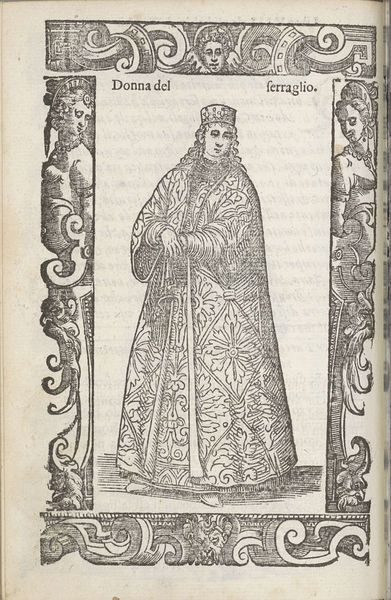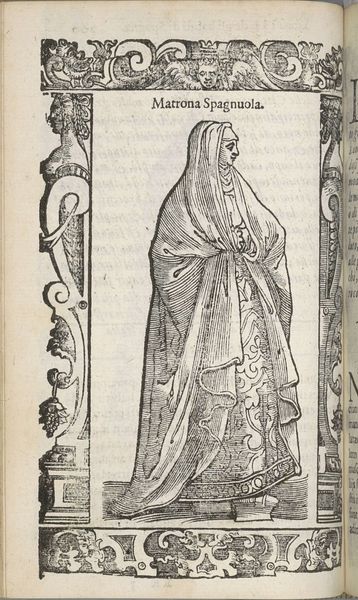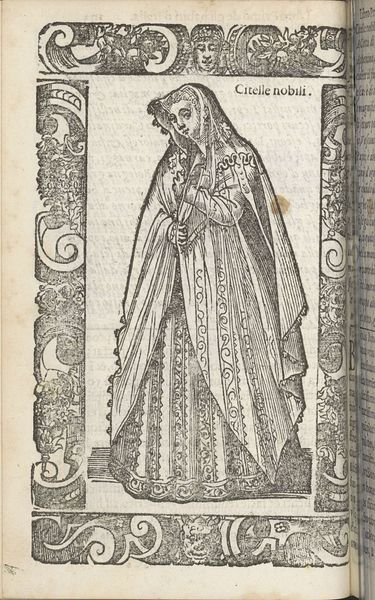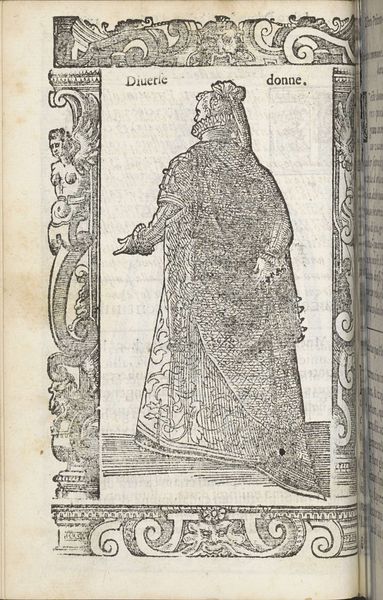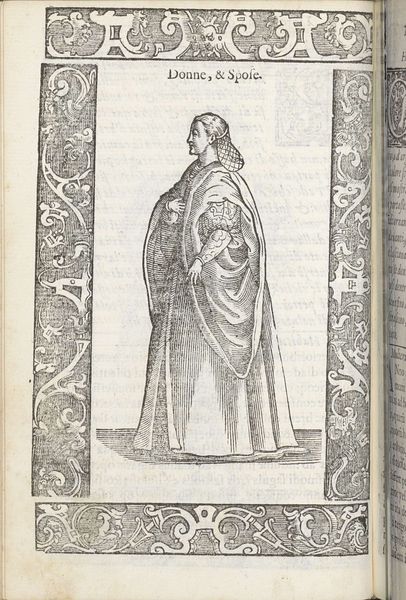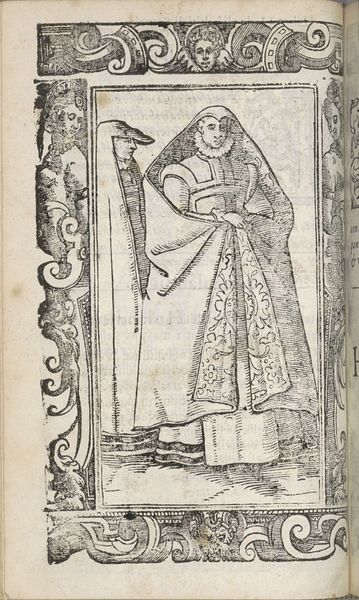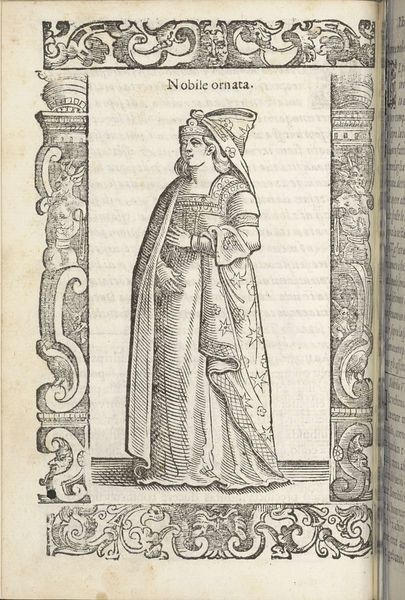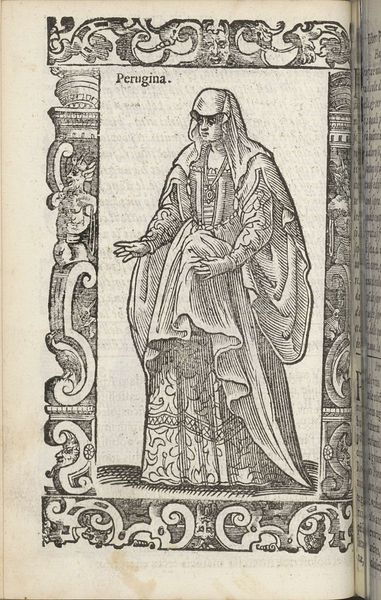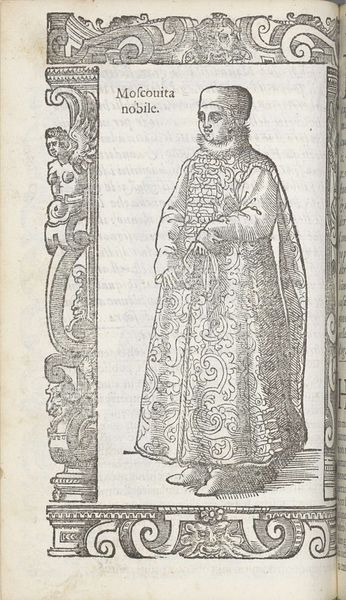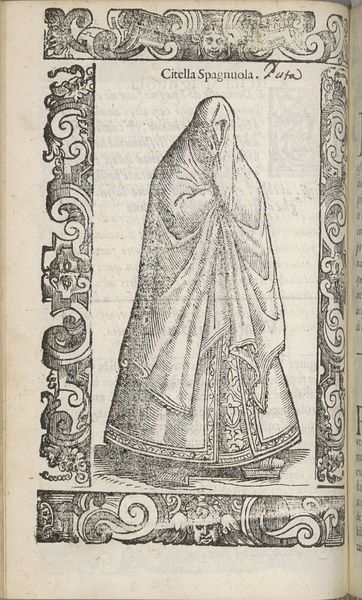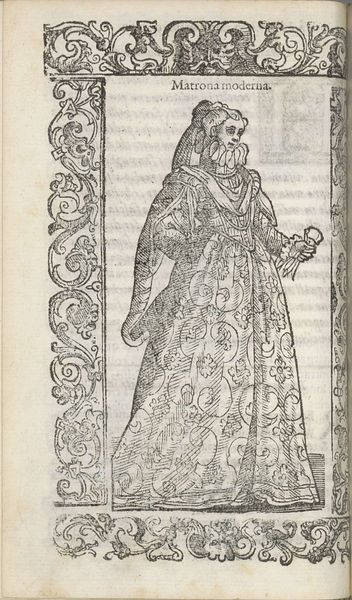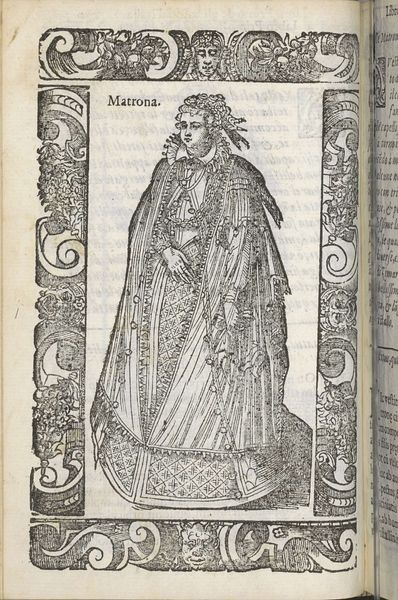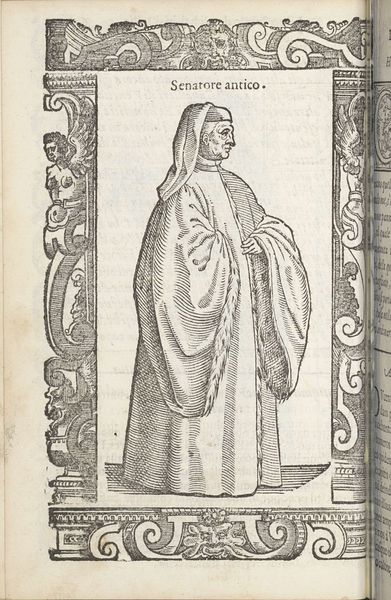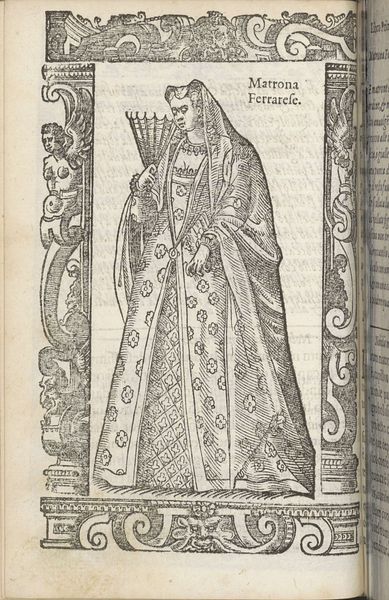
print, engraving
#
portrait
#
pen drawing
# print
#
old engraving style
#
figuration
#
11_renaissance
#
islamic-art
#
genre-painting
#
engraving
Dimensions: height 167 mm, width 125 mm
Copyright: Rijks Museum: Open Domain
Curator: Here we have Christoph Krieger’s "Turkse vrouw," created in 1598. It’s an engraving, showcasing a Turkish woman in what appears to be traditional dress. Editor: The first thing that strikes me is the sheer amount of meticulous detail etched into this print. Look at the patterning on her robe—it seems to vibrate with complexity. It’s mesmerizing. Curator: Absolutely. Let's consider the material qualities. Engraving, as a process, demanded incredible skill and labor. Each line was carefully incised into the metal plate, allowing for mass reproduction, which is no small thing for 1598. Editor: Right, we're looking at printmaking in its early, revolutionary stages of distribution, a technological leap with huge social impact. But it also speaks volumes about how Europeans viewed, and perhaps consumed, the image of the 'Turk' at this time. Was this meant for scientific documentation or titillation? Curator: Good point. And stylistically, notice how the figure is framed—almost imprisoned—by that ornate border. Its presence certainly enhances the composition’s symbolic tension. Editor: It creates a separation, marking her as an outsider, "other." The pattern-work, while skillful, perhaps served a role in reifying a distant, orientalist fantasy. And what do you think of those chopine-like shoes? They speak of class, privilege, fashion. Curator: They are rather extravagant. And they also point to an artistic interest in proportion and height. By placing the woman in elevated shoes, the artist elongates and almost distorts the shape. We get a better sense of line, dimension, and form. Editor: I keep coming back to the act of engraving itself, the artisanry involved in taking steel implements to hard materials to form representational lines—what choices were involved to depict each intricate feature in this period image. What tools? How did it evolve over time? It also leaves me questioning her social status, and the implications of translating cultures for European consumption. Curator: Precisely. It is clear that beyond subject matter, understanding artistic intent here helps us interpret larger structures related to viewing other cultures in art. Editor: This print offers a rich lesson in Renaissance print culture and what materials and process tell us about its global gaze.
Comments
No comments
Be the first to comment and join the conversation on the ultimate creative platform.
